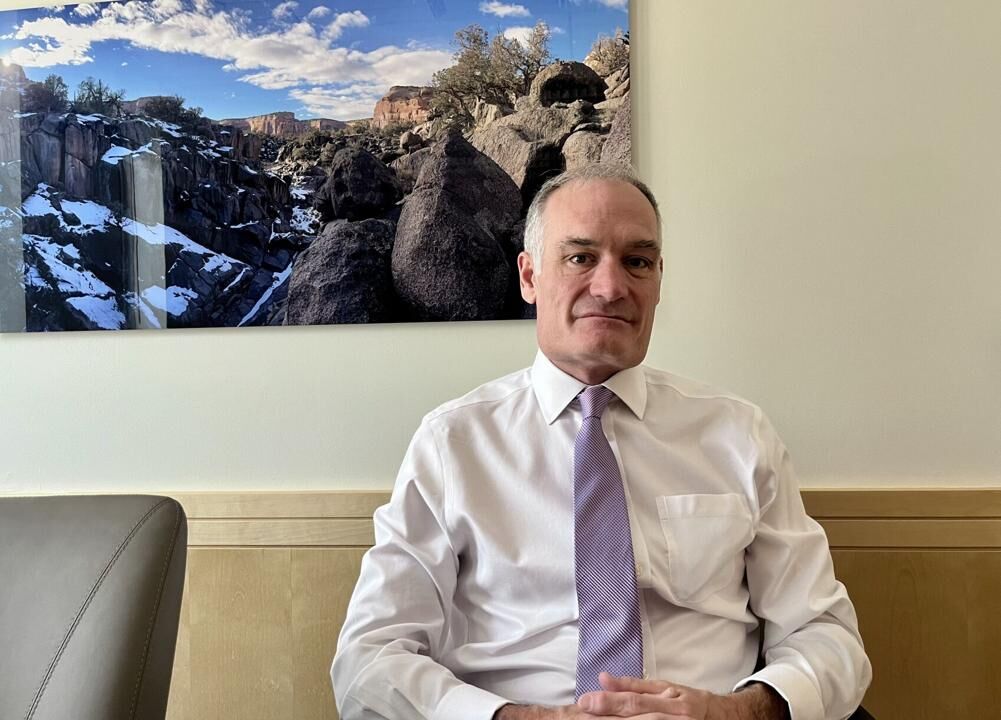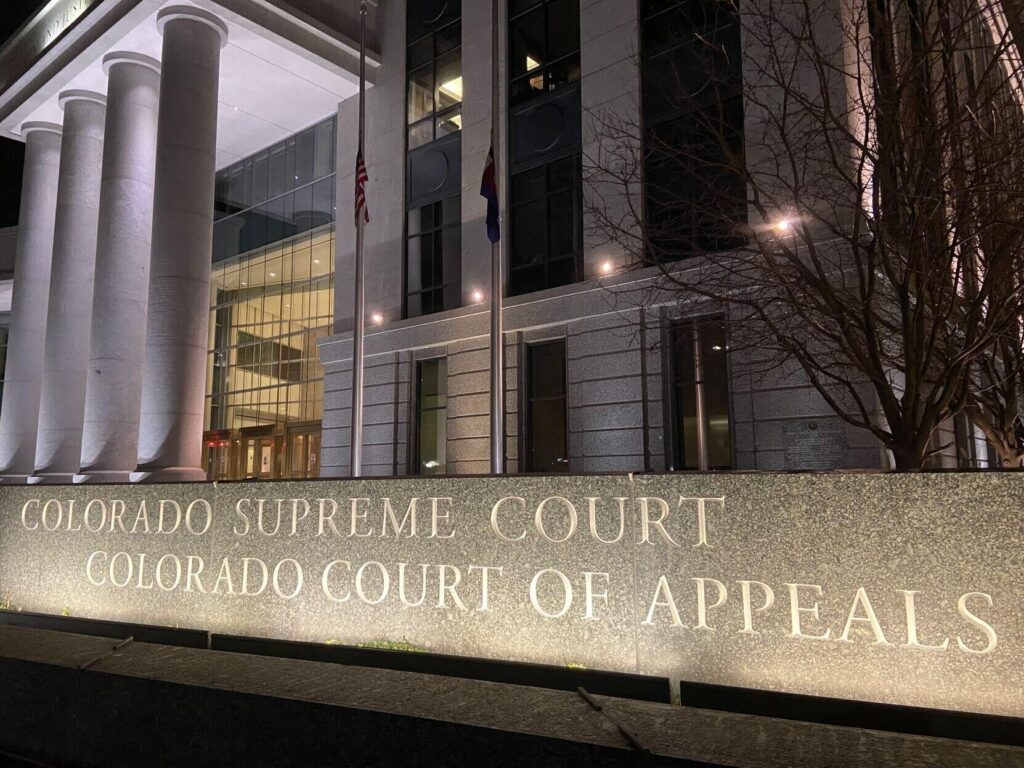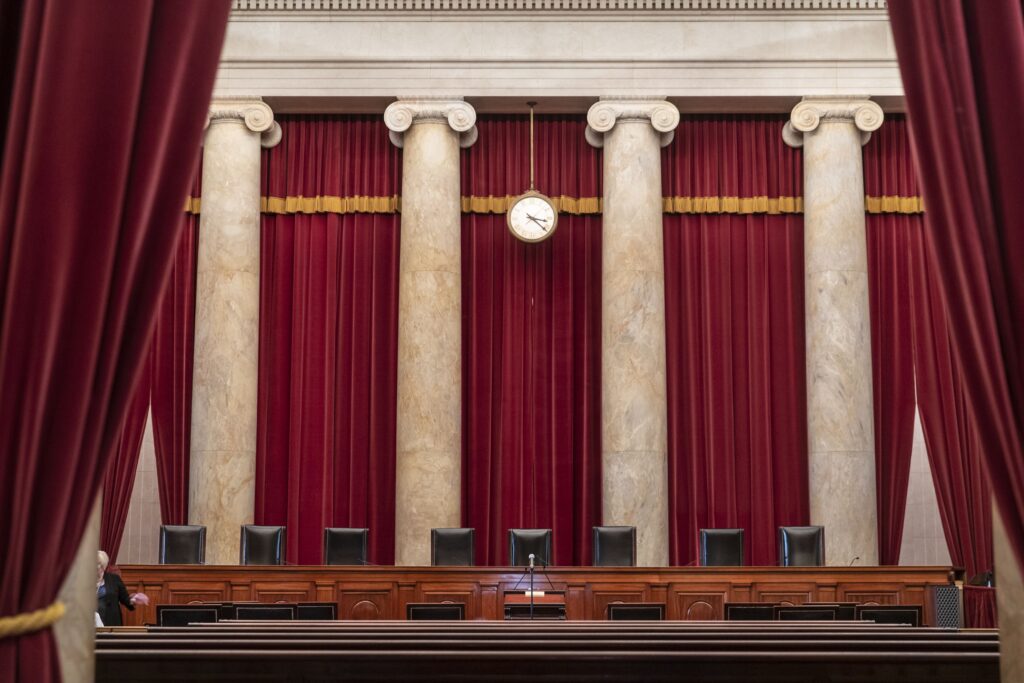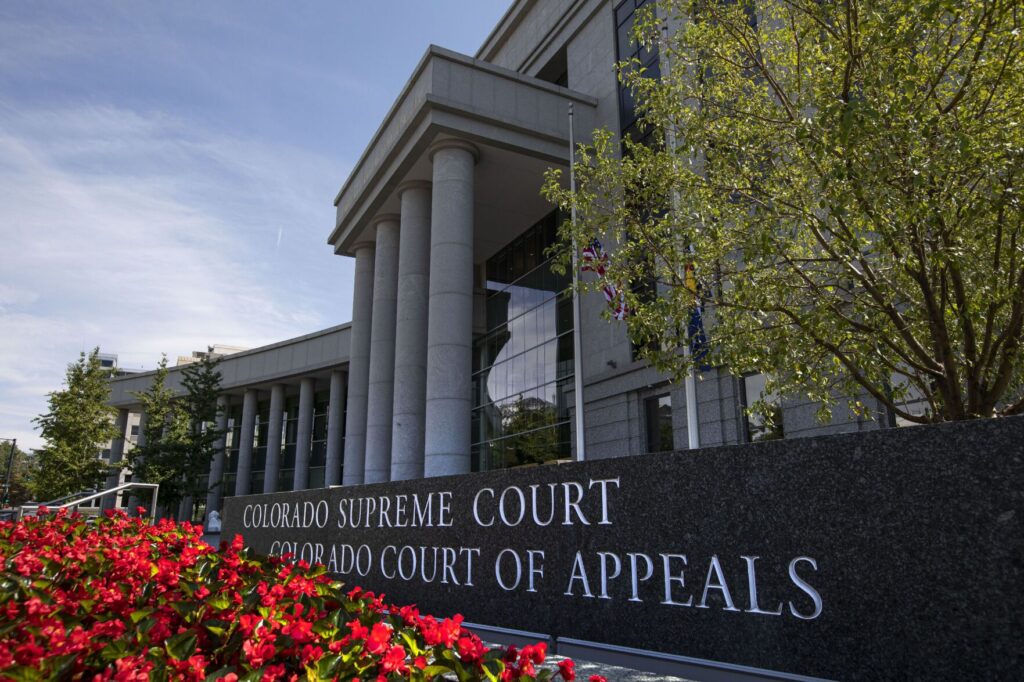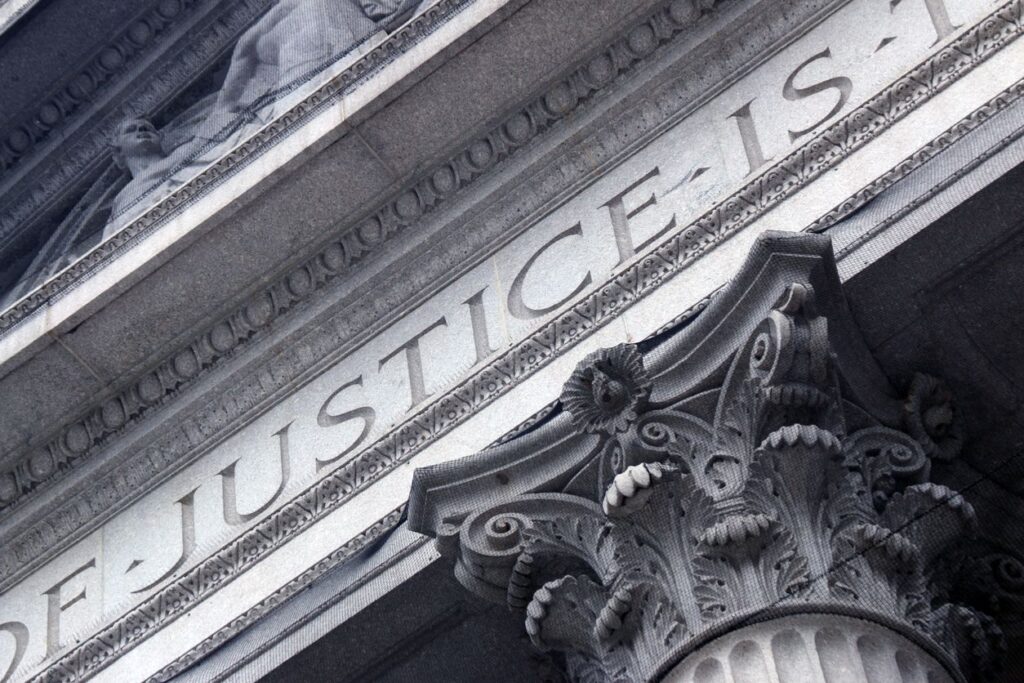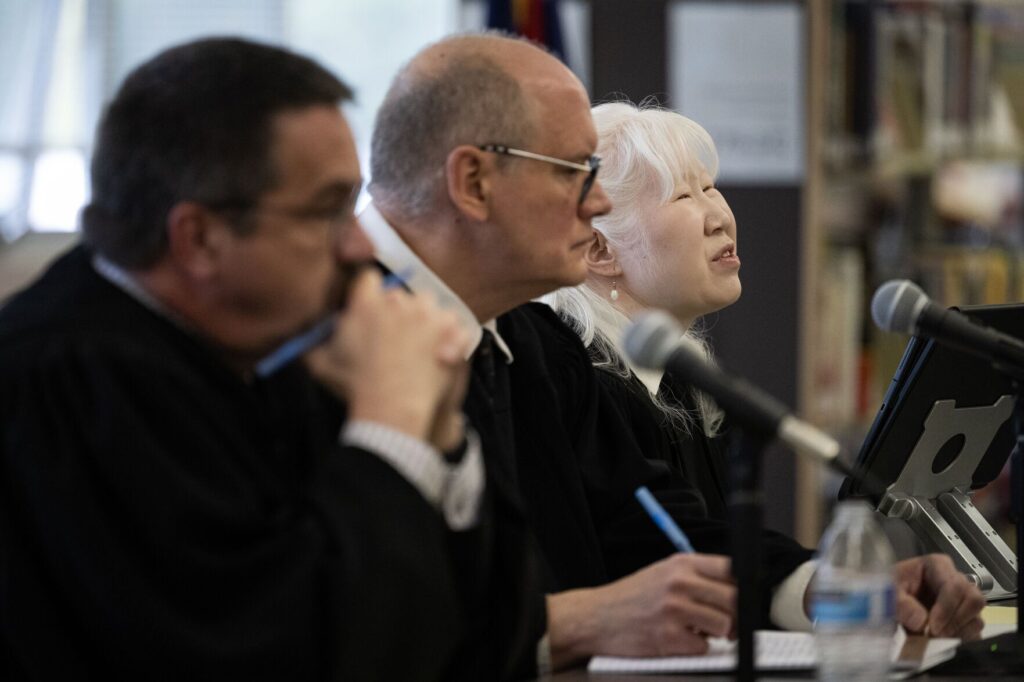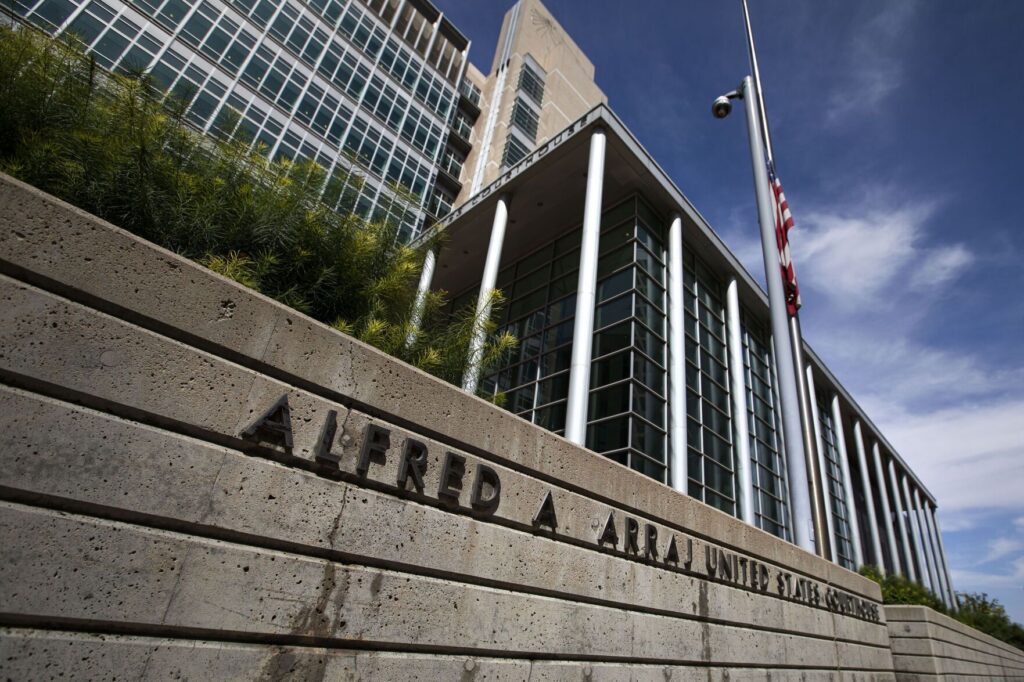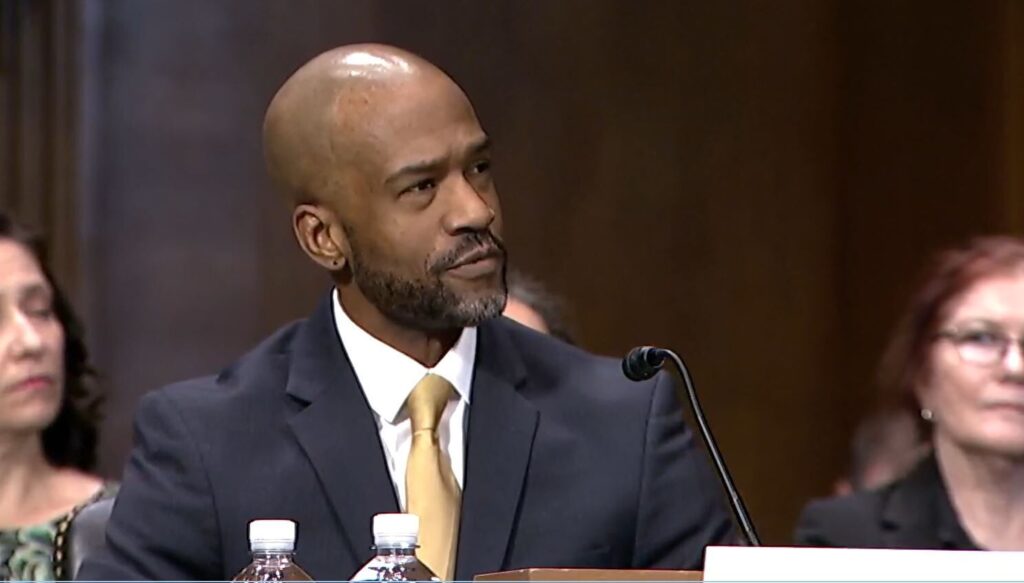AI, criminal sentencing, SCOTUS ‘messaging’: 10th Circuit conference addresses hot-button issues
The use of artificial intelligence, various aspects of criminal law and the work of the U.S. Supreme Court were among the topics discussed in Colorado Springs at least week’s biennial gathering of the U.S. Court of Appeals for the 10th Circuit.
The 10th Circuit, which hears appeals in federal cases arising from Colorado, Oklahoma, Utah, Kansas, New Mexico and Wyoming, hosted a three-day Bench & Bar Conference at The Broadmoor resort. Although large portions were dedicated to panel discussions about specific legal topics, the event also featured appearances from multiple members of the nation’s highest court.
Justice Neil M. Gorsuch, a former 10th Circuit judge, provided introductory remarks on Thursday, and Justice Amy Coney Barrett answered friendly questions from appellate judges on Friday night.
In a surprise development, Colorado Supreme Court Justice Melissa Hart spoke out about threats against judges — specifically, threats she received after participating in a controversial decision last year — during a discussion she moderated.
#dsk-box-ad-e.new-ad-loading [id*=”-outstream-icon”] {display: none !important;}[id*=”-outstream-icon”],[id*=”-outstream-icon”] > img {width: 24px;height: 24px;display: block;cursor: pointer !important;font-size: 24px !important;line-height: 1 !important;max-width: unset !important;vertical-align: unset !important;box-shadow: unset !important;}[id*=”-outstream-icon”]:hover {filter: drop-shadow(black 0px 0px 6px);}#bottom-controls_videoPlayer_6652 {position: absolute;bottom: 5px;left: 5px;display: grid;grid-template-columns: 24px 24px;}#tpd-volume-control_videoPlayer_6652.muted > #volume-on-outstream-icon_videoPlayer_6652,#tpd-volume-control_videoPlayer_6652:not(.muted) > #volume-muted-outstream-icon_videoPlayer_6652 {display: none;}#tpd-play-pause-control_videoPlayer_6652[playing=”true”] > #click-to-play-outstream-icon,#tpd-play-pause-control_videoPlayer_6652[playing=”false”] > #click-to-pause-outstream-icon {display: none;}@media (max-width: 770px) { #dsk-box-ad-e.new-ad-loading iframe[src],#dsk-box-ad-e.new-ad-loading video {display: none !important;} } #dsk-box-ad-e.new-ad-loading #ad-container_videoPlayer_6652 {background: #5a585830 !important;mask: linear-gradient(315deg, #000 30%, #88888855, #000 70%) right / 350% 100%;animation: tpd-shimmer 1.15s infinite;}@keyframes tpd-shimmer {100% {mask-position: left}}#dsk-box-ad-e:not(.new-ad-loading) {background: black;}#dsk-box-ad-e {opacity: 1;animation-name: fadeInOpacity;animation-iteration-count: 1;animation-timing-function: ease-in;animation-duration: 0.75s;}@keyframes fadeInOpacity {0% {opacity: 0;}100% {opacity: 1;}}#dsk-box-ad-e.new-ad-loading #progress-row_videoPlayer_6652,#dsk-box-ad-e.has-countdown #progress-row_videoPlayer_6652 {display: none;}#progress-row_videoPlayer_6652 {width: 100%;display: block;bottom: 0px;position: absolute;}#dsk-box-ad-e.new-ad-loading #progressLabel-container_videoPlayer_6652 {display: none;}@media (max-width: 770px) { #progressLabel-container_videoPlayer_6652 {display: none;} } #dsk-box-ad-e.has-countdown #progressLabel-container_videoPlayer_6652 {display: none;}#progressLabel-container_videoPlayer_6652 {width: 640px;position: absolute;bottom: 15px;height: 0px;}#progressLabel_videoPlayer_6652 {color: white;font-size: 7pt;font-family: Arial, Sans-Serif;text-align: center;width: fit-content;height: 5px;margin: auto;}#progressBar_videoPlayer_6652 {width: 640px;height: 3px;background-color: lightgray;}#progress_videoPlayer_6652 {height: 100%;background-color: cornflowerblue;width: 0;}#dsk-box-ad-e:not(.replay) #replay-outstream-container_videoPlayer_6652 {display: none !important;}#dsk-box-ad-e.replay #replay-outstream-container_videoPlayer_6652 {display: flex;height: 100%;width: 100%;z-index: 99;position: relative;background: black;}#dsk-box-ad-e.replay #replay-outstream-icon_videoPlayer_6652 {width: 30px;height: 30px;margin: auto;position: relative;background-image: url(‘data:image/svg+xml,%3Csvg fill=”white” height=”30px” width=”30px” xmlns=”https://www.w3.org/2000/svg” viewBox=”0 0 74.999 74.999″ xml:space=”preserve” stroke=”black”%3E%3Cpath d=”M33.511 71.013c15.487 0 28.551-10.563 32.375-24.859h9.113L61.055 22 47.111 46.151h8.006c-3.44 8.563-11.826 14.628-21.605 14.628-12.837 0-23.28-10.443-23.28-23.28 0-12.836 10.443-23.28 23.28-23.28 6.604 0 12.566 2.768 16.809 7.196l5.258-9.108c-5.898-5.176-13.619-8.32-22.065-8.32C15.034 3.987 0 19.019 0 37.5c-.002 18.481 15.03 33.513 33.511 33.513z”/%3E%3C/svg%3E’);}#dsk-box-ad-e.replay #bottom-controls_videoPlayer_6652_videoPlayer_6652,#dsk-box-ad-e.replay [id*=”-outstream-icon”]:not([id^=”replay-outstream-icon”]) {display: none !important;}#dsk-box-ad-e.replay #video-container_videoPlayer_6652 {display: none !important;}#dsk-box-ad-e {margin-left: auto;margin-right: auto;}/* Main Styling */#dsk-box-ad-e.first-render {display: none !important;}#page-content_videoPlayer_6652 {display: inline-block;}#video-container_videoPlayer_6652 {position: relative;}#video-element_videoPlayer_6652 {position: absolute;top: 0;left: 0;}/* Some providers inject their ad content into the video element *//* but if not we hide it. */#video-element_videoPlayer_6652:not([src]) {display: none;}#ad-container_videoPlayer_6652 {position: absolute;top: 0;left: 0;cursor: pointer;}#dsk-box-ad-e,#page-content_videoPlayer_6652,#video-container_videoPlayer_6652,#video-element_videoPlayer_6652,#ad-container_videoPlayer_6652 {width: 640px;height: 360px;}#dsk-box-ad-e div[id*=”google_ads_iframe_”] {width: 640px !important;height: 360px !important;z-index: -1;position: absolute;}
Here are a few of the major subjects discussed at the conference.
‘It’s not just a parlor trick’
Colorado Supreme Court Justice Maria E. Berkenkotter told attendees that generative AI could become a “powerful tool” for writing first drafts of legal filings or opinions, akin to the output of a junior lawyer or intern.
“You might think to yourself, ‘Why would a lawyer do this?’ Well, the answer, I think, is it might take you, as a practicing lawyer, seven hours to come up with a first draft or three hours to come up with a first draft,” she said. “You can put some queries into an AI tool and it cranks out a first draft for you in three minutes. That’s pretty tempting.”

Colorado Supreme Court Justice Maria E. Berkenkotter speaks to students at Pine Creek High School in Colorado Springs on Thursday, Nov. 17, 2022. (The Gazette, Parker Seibold)
Berkenkotter noted at least one federal appeals judge has openly acknowledged turning to ChatGPT for research, and she said judges elsewhere are undoubtedly using AI to draft opinions.
“It’s not just a parlor trick,” Berkenkotter cautioned. “For those of you who are thinking, ‘OK, this is a tomorrow problem,’ part of my message here is: It is a today problem. And it’s actually a yesterday problem.”
Already, Colorado’s judiciary has begun exploring potential rule changes to accommodate emerging AI-powered legal tools. One of the state’s federal judges has also started requiring lawyers to indicate whether they have or have not relied on AI in their filings. And Colorado’s presiding disciplinary judge has handed down a punishment to a lawyer who used ChatGPT to generate fake case citations, then lied to a judge about it.
Berkenkotter said early prohibitions on any use of artificial intelligence revealed a “lack of understanding,” as established legal research tools are AI-powered. At the same time, she admitted to confidentiality concerns for lawyers who input client-specific information into generative AI programs, as well as AI models engaging in unethical behavior and the potential for ouputs that reflect existing biases.
To illustrate the latter point, Berkenkotter generated an image using the prompt “male robot judge” and displayed the result. She characterized the picture as “stern,” “serious” and “thoughtful.” But when she used the prompt of “female robot judge,” the resulting image was, as Berkenkotter characterized it, “sexy.”
“Get curious about this, but curious in a way that’s thoughtful and careful,” she said.
SCOTUS’s messaging problem?
A panel discussion about the latest developments in the U.S. Supreme Court’s recent term took a detour when University of Chicago law Prof. William Baude suggested the court has “a real messaging problem.”
“It has not done well at messaging. I’m just gonna take that stand,” echoed Hart, the Colorado Supreme Court justice.

Light illuminates part of the Supreme Court building Wednesday on Capitol Hill in Washington.
Baude said the court could try harder to arrive at unanimous opinions and find common ground.
“They can try to produce opinions that are shorter and easier for everyone to engage with,” he added.
Eric Olson, Colorado’s former solicitor general, contrasted the U.S. Supreme Court’s operations with Colorado’s judiciary, whose “Courts in the Community” program routinely brings the state appellate courts into schools multiple times a year to hear cases and answer audience questions.
In contrast, engaging with the U.S. Supreme Court entails going to “the big fancy building where you can’t get a ticket and there are no cameras and you don’t know what happened,” he said.
Noel Francisco, the U.S. solicitor general during the Trump administration, disagreed that the Supreme Court has a communications problem. Instead, he argued any dissatisfaction stems from people’s disapproval with how the 6-3 conservative majority is deciding issues relating to reproductive rights, gun violence and other heated topics.
“There is no messaging that will overcome that basic divide over what the proper role of the court is. I think the only potential remedy is time,” he said. “Over time, if the country adjusts to this particular role of the court — just as it took time to adjust to the old way the court did business — I think that will tamp down some of the dissent.”

In this June 20, 2019, file photo, the Supreme Court is seen under stormy skies in Washington. Two issues that could determine the distribution of political power for the next decade await resolution on the Supreme Court’s final day of decisions before a long summer break. Chief Justice John Roberts could well be the author of decisions on both politically charged topics Thursday, June 27, whether to allow a citizenship question on the 2020 census and place limits on drawing electoral districts for partisan gain.
Criminal sentencing
Attendees heard from the chair of the U.S. Sentencing Commission, Carlton W. Reeves, who is also a federal trial judge in the Southern District of Mississippi. The commission issues sentencing guidelines for federal courts, and at least three of its seven members are always judges.
“I see the failures of my state court system. How the Justice Department has come in at various times in the state of Mississippi. And the Justice Department has entered the consent decrees and everything else,” said Reeves. “You bring in all these perspectives, all these things.”
He said the commission, when working to revise the sentencing guidance for trial judges, accounts for research, data analysis and the comments of a wide range of interested parties. The goal, Reeves added, is to avoid reflexively imposing “outdated ideas” about sentencing into the recommendations.
“We’ve even made it much easier for the formerly incarcerated and the currently incarcerated to give us their views on this system that they’re a part of — that they can’t get out of, in many instances,” he said.
Among the 1,200 pages of comments for the 2024 amendments, Reeves called out an email he received from U.S. District Court Senior Judge John L. Kane of Colorado, which complained about the “trial tax.” Kane deemed it “Orwellian” for the guidelines to advise a lower sentence for a defendant’s acceptance of responsibility, which creates pressure for defendants to plead guilty rather than exercise their constitutional right to a jury trial.

The latest revisions currently pending review in Congress generally would prohibit increases to defendants’ sentences based on conduct for which they were acquitted in federal court. There is another amendment to enable more lenient sentences for defendants who committed offenses at relatively young ages.
Reeves also alluded to the critical treatment Justice Ketanji Brown Jackson received in her 2022 U.S. Senate confirmation hearings for deviating from the sentencing guidelines in child pornography cases during her time as a trial judge. Reeves said the broader issue causing judges to substantially depart from the guidelines is the ability to share larger volumes of images more easily through changes in technology.
“That is something we will have to address,” he said.
Making better pretrial detention decisions
In October 2022, Alison Siegler of the University of Chicago’s Federal Criminal Justice Clinic published a report finding most federal defendants are detained pending trial, with detention rates ranging from 53% to 82% within the trial courts of the 10th Circuit. However, she found that for defendants who are released pending trial, re-arrests or failures to appear only occur around 1% of the time.
“These high detention rates and these long, expensive jail stays are really not what Congress intended when they passed the Bail Reform Act” of 1984, she said. “There was a presumption of release.”
U.S. Magistrate Judge N. Reid Neuteiter of Colorado said the initial training for federal judges includes a reminder that defendants are innocent until proven guilty.
“They emphasized all the bad things that happen to criminal defendants when they get detained. They lose their jobs. Their pets die. Their marriages fall apart. They cannot demonstrate to the district judge, if they eventually plead, that they got their lives back together,” he said.

The Byron White U.S. Courthouse in Denver, which is home to the U.S. Court of Appeals for the 10th Circuit.
Siegler said her research indicated magistrate judges, who make pretrial detention decisions, are not always following the law when initially ordering defendants into custody. Timothy P. O’Hara, a federal public defender in Colorado who will soon take the bench as a magistrate judge, said the small amount of time between a person’s initial appearance and their detention hearing renders it “really a gut decision.”
“It’s not like they get a whole jury trial on the issue of detention. They might get 20 minutes of an argument with very little evidence,” he said.
Neureiter said he has been frustrated at times when a defendant was brought into court in Colorado on a warrant from another state and he believed pretrial release was warranted.
“A Hawaii district judge immediately reversed me. And the guy, the next day, was beaten almost to death in a federal detention center,” Neureiter said.
U.S. Magistrate Judge Kathryn A. Starnella of Colorado said she was surprised to hear some prosecutors’ offices have found accused child porn offenders are release-worthy in certain cases, and she wondered what appropriate conditions of release might be.
“Individuals being in some sort of halfway house or a location where their access to basic communication can be limited,” responded Assistant U.S. Attorney David McCrary for the Western District of Oklahoma. He added that putting defendants under third-party supervision was also an option pretrial.
Fallout from affirmative action decision
Last year, the Supreme Court’s majority curtailed the use of students’ race in university admissions decisions. However, Chief Justice John G. Roberts Jr. concluded his majority opinion with a key qualification.
“At the same time, as all parties agree, nothing in this opinion should be construed as prohibiting universities from considering an applicant’s discussion of how race affected his or her life, be it through discrimination, inspiration, or otherwise,” he wrote. “In other words, the student must be treated based on his or her experiences as an individual — not on the basis of race.”

President Donald Trump shakes hands with Supreme Court Justice Brett Kavanaugh, after delivering his State of the Union address to a joint session of Congress on Capitol Hill in Washington, Tuesday, Feb. 5, 2019. Watching are from left, Supreme Court Chief Justice John Roberts, Associate Justice Elena Kagan and Associate Justice Neil Gorsuch. (AP Photo/J. Scott Applewhite)
“My reaction was, ‘OK.’ Because, in fact, the way that Harvard was doing this admissions process was to talk about each of these individuals as individuals,” said Seth P. Waxman, who defended Harvard College against the challenge to its admissions policies. “The Supreme Court’s invitation to continue considering race in this way was not that dissimilar from what the evidence showed Harvard’s admissions process was.”
L. Song Richardson, who recently stepped down as Colorado College’s president, said she was unsurprised by the Supreme Court’s ruling and received “threatening” letters from lawyers across the country warning about potential lawsuits if Colorado College did not abide by the decision. However, she, too, felt relieved at what Roberts wrote.
“Because essentially that is what we were doing at Colorado College and what many other schools across the country were doing,” Richardson elaborated.
She added that some universities have now adopted essay questions using Roberts’ language to give prospective students an opportunity to talk about their demographics, and she speculated the next major question confronting college admissions is the role wealth plays.
“The dirty little secret many leaders in higher ed never mention out loud until they step down or when they’re at conferences with each other behind closed doors,” Richardson continued, is that “schools typically lower the standards that they use in order to admit students who are wealthy, who will pay full tuition.”
In addition to possible lawsuits against wealth-based affirmative action, she also suggested potential litigation around sex-based affirmative action, given that women continue to outpace men in college enrollment.
Waxman said he has since been fielding calls from corporate leaders who are now wary of challenges to their diversity, equity and inclusion (DEI) initiatives. He noted the Supreme Court’s decision did not largely change the ground rules, but there are permissible ways to structure DEI programs that are not exclusionary.
In a country that is “distinctly conscious of race and privilege and other demographic factors,” he said, “we are trying to find the constitutionally permissible way to overcome the discriminatory effects and the suboptimal output from those biases.”

Colorado College freshmen Katerine Beard, left, and Kendall Havill wear masks as they walk across campus Monday, Aug. 17, 2020, on the first day of freshman orientation at the Colorado Springs college.
Tribal law
In 2020, the Supreme Court ruled, by 5-4, that Oklahoma could not prosecute certain crimes committed by American Indians in a large swath of Eastern Oklahoma, as the area remained “Indian Country.” The effect of the McGirt v. Oklahoma decision has been to shift criminal caseloads onto the federal and tribal court systems.
“I had never set foot into a tribal court system, I’m embarrassed to say, until I came to interview for this job,” said Choctaw Nation Presiding District Court Judge Amy Pierce. “I am astonished at how sophisticated our court system is and how sophisticated other tribal court systems are. What I can tell you is this system works and it works well.”
Pierce said in the year following McGirt, felony filings in her court increased by 3,633% and misdemeanors jumped by 1,969%, from a couple of dozen to hundreds of cases. The Nation is now building a third judicial center and hired more than 150 employees.
“It’s a lot of money that’s been spent on McGirt by the tribe,” she said.
Other panelists suggested the current Supreme Court appears more inclined to respect tribal sovereignty and treaty rights than past iterations did.
“I reject the argument that there is a dark future for those of us working in Indian Country,” said Elizabeth Kronk Warner of the S.J. Quinney College of Law.
Gabriel receives award

Colorado Supreme Court Justice Richard L. Gabriel poses with his American Inns of Court Award, which he received at the Bench & Bar Conference of the U.S. Court of Appeals for the 10th Circuit on Sept. 6, 2024. Photo courtesy of Richard Gabriel.
Colorado Supreme Court Justice Richard L. Gabriel received the American Inns of Court Award, which is presented at circuit conferences to those who exhibit “sterling character and unquestioned integrity” as well as “ongoing dedication to the highest standards of the legal profession and the rule of law.”
“He’s a transplanted Brooklyn guy who came out to the West, loves the West and has clearly had an impact throughout this part of the country,” said former 10th Circuit Chief Judge Deanell Reece Tacha of Kansas. “Being in the schools, being in the community, is a huge part of Justice Gabriel’s commitment.”
“As I was reading through his material, he could be the poster child for this award,” added current Chief Judge Jerome A. Holmes of Oklahoma.
Gabriel, who has sat on the state Supreme Court since 2015, said that in an era of “intense scrutiny of public institutions,” he felt it important to highlight professionalism and civility in the legal profession.
“I hope you all will join me in what I see as truly noble effort,” he said. “I know we can and will swing the pendulum back to where it needs to be.”


